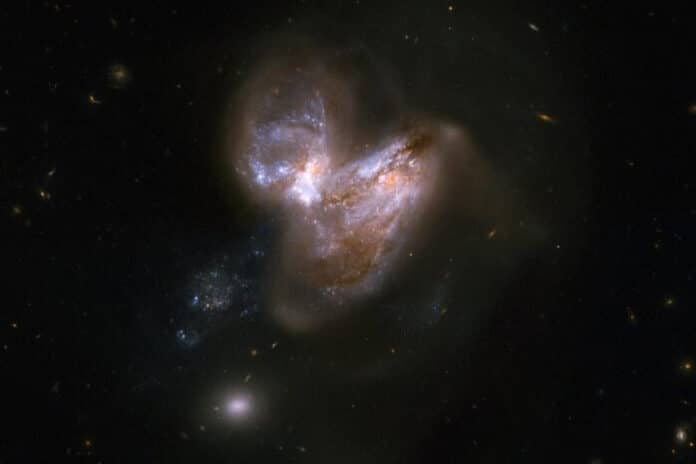Supermassive black holes are so common nearly every large galaxy has one. However, their formation remains a mystery to scientists, several of these objects were found when the Universe was very young.
Because it takes so long for the light from these sources to reach us, we see them as they were in the past. In a new study, astronomers have reported a new type of primordial black hole in one of the most extreme galaxies known in the very early Universe. This rapidly growing black hole is discovered using the Atacama Large Millimeter Array (ALMA), a radio observatory sited in Chile, in the galaxy named COS-87259.
The scientists found that the galaxy COS-87259, which houses this new supermassive black hole, is quite extreme, generating stars at a pace 1000 times that of our own Milky Way and holding more than a billion solar masses worth of interstellar dust. The galaxy’s rapid star formation burst and the expanding supermassive black hole at its center contribute to its brightness.
Discovered by astronomers at the University of Texas and the University of Arizona, the black hole is heavily enshrouded by cosmic “dust,” causing nearly all of its light to be emitted in the mid-infrared range of the electromagnetic spectrum. It also generated a strong jet of material moving at near-light speed through the host galaxy.
Scientists noted, “What is particularly astonishing about this new object is that it was identified over a relatively small patch of the sky typically used to detect similar objects – less than ten times the size of the full moon – suggesting there could be thousands of similar sources in the very early Universe. This was completely unexpected from previous data.”
The unexpected finding of COS-87259 and its black hole raises many questions concerning the prevalence of highly early supermassive black holes and the kinds of galaxies they generally emerge.
Ryan Endsley, the lead author of the paper and now a Postdoctoral Fellow at The University of Texas at Austin, says, “These results suggest that very early supermassive black holes were often heavily obscured by dust, perhaps as a consequence of the intense star formation activity in their host galaxies. This is something others have been predicting for a few years now, and it’s nice to see the first direct observational evidence supporting this scenario.”
“While nobody expected to find this kind of object in the very early Universe, its discovery takes a step towards building a much better understanding of how billion solar mass black holes were able to form so early on in the lifetime of the Universe, as well how the most massive galaxies first evolved.”
Journal Reference:
- Ryan Endsley, Daniel Stark, et al. ALMA confirmation of an obscured hyperluminous radio-loud AGN at z = 6.853 associated with a dusty starburst in the 1.5 deg2 COSMOS field. Monthly Notices of the Royal Astronomical Society. DOI: 10.1093/mnras/stad266
